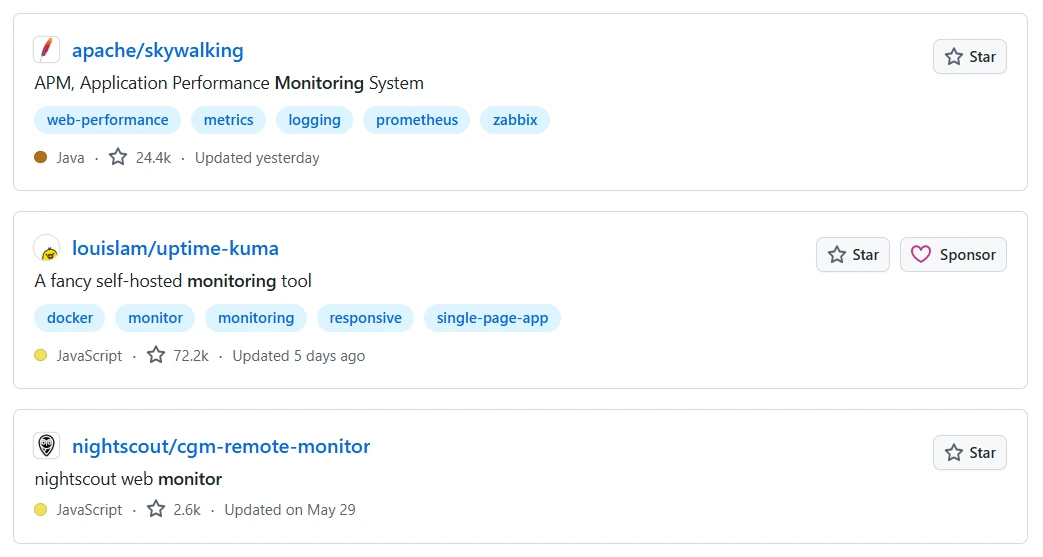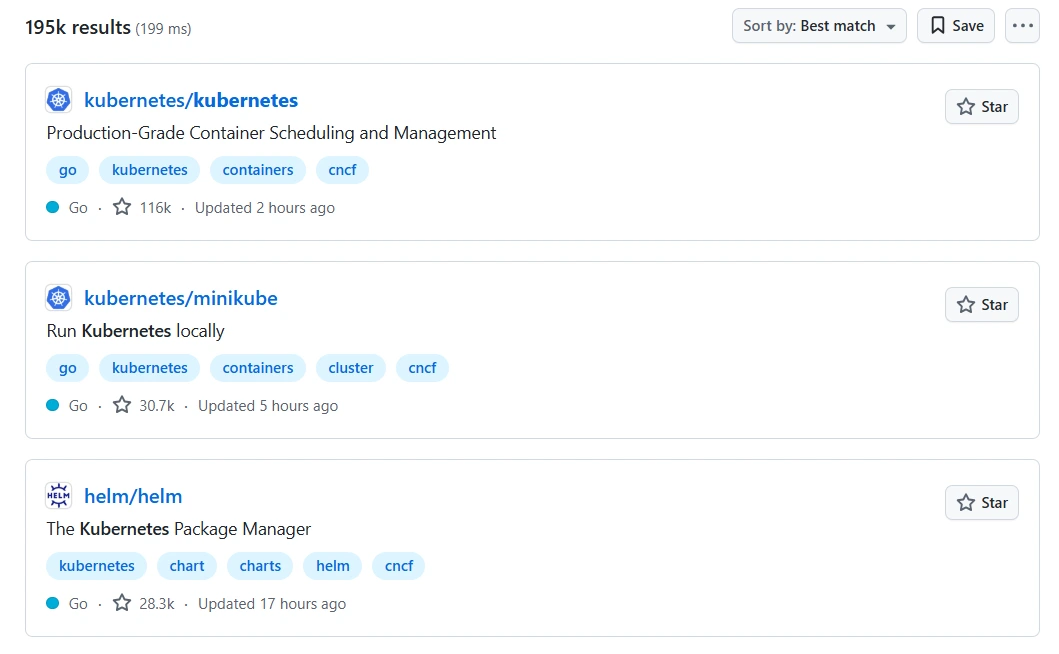TL;DR
- GitHub SEO includes optimizing your repository name, about (description), and topics for increasing discoverability and engagement.
- Grow stars, watchers, and forks by driving traffic through developer channels, writing a strong README, and adding clear CTAs.
- Utilize distribution platforms, such as Dev.to, Dailydev, Medium, and Reddit.
You’ve built a useful developer tool or open-source SDK to support your B2B SaaS product; it’s live on GitHub, technically solid, and solves a real problem. But despite the effort, it’s not getting much traction. Developers aren’t discovering it, and it’s not showing up in relevant GitHub searches.
In a crowded ecosystem, discoverability is a competitive edge. That’s where you need to practice GitHub SEO. By optimizing some specific aspects of your project on GitHub, you can increase visibility in GitHub’s internal search and attract more developers organically. Whether you're supporting adoption for your API or trying to grow your open-source presence, this guide will walk you through how to do GitHub SEO.
Why Should You Do GitHub SEO?
Here are the reasons why you should leverage GitHub SEO techniques:
1. Improve Discoverability in GitHub Search
GitHub’s search ranks repositories based on repository name, about, topics, stars, watchers, and forks. If your metadata lacks relevant keywords, your project won’t appear in relevant searches. A repo named react-calendar with matching tags will rank higher than a vague name like my-widget.
2. Boost Visibility on Google
GitHub repos are indexed by Google. Well-written READMEs with clear headings, keywords, and structured content can rank for external queries like:
fast csv parser golang site:github.comopen source JWT auth node.js
Google often pulls snippets from your README, repo name, and description - so keyword clarity matters.
3. Increase Engagement Signals
Most developers filter GitHub by language, stars, or recency. Clear descriptions, good topics, and solid docs make your repo more appealing - and easier to contribute to. Vague or untagged repos rarely get discovered or forked.
4. Enable Better Indexing of Technical Content
Include precise keywords like OAuth2, Next.js, or FastAPI in repo names and topics, README sections, and file names (especially .md files). If you solve a niche problem, describe it exactly. That makes your repo show up for specific queries.
5. Grow Reputation and Reach
Optimized repos look polished, professional, and easier to use. Whether you’re an open-source maintainer or building dev tools, GitHub SEO helps your work reach the right audience - and signals technical clarity and quality.
Tired of wasting engineering time on content?
Here’s How To Do GitHub SEO
To make your repository more discoverable both on GitHub and through search engines like Google, you need to optimize key elements of your project’s metadata and content.
1. Repository Name
A well-crafted repository name is one of the most important factors in GitHub SEO. It’s indexed directly by GitHub’s search engine and helps users immediately understand the purpose of your project.
What makes a good repo name?
Your repo name should:
- Include a primary keyword (e.g.
auth,authentication) - Optionally include the framework or tech stack (e.g.
next,rails,kubernetes) - Keep it short, readable, and search-aligned
For example:
AzureAD/microsoft-authentication-library-for-js
It is a bit long, but extremely clear. It includes both the main function (authentication) and target language (js). Anyone searching for "authentication library JS" is likely to land here. It also includes the organization name (AzureAD), which reinforces trust.

2. About
The About section (the short description under your repo name) is a key element for ranking in GitHub search. It's one of the first things both users and the algorithm see, so it should be clear, specific, and keyword-focused.
Best practices:
- Start with the main keyword: If your project handles monitoring, use that term early in the sentence.
- Keep it short and specific: Aim for describing your project in 5 - 15 words. Explain what the project does, not how great it is.
- Mention the platform or use case: Clarify if it’s built for a specific stack or tech (e.g., “for Kubernetes”, “built with JavaScript”).
Let’s take the second example of louislam/uptime-kuma, its description is:
"A fancy self-hosted monitoring tool"
This one is a casual description but effective as it clearly includes “monitoring” and even hints at deployment style (“self-hosted”), which developers may search for.

3. Topics
Topics help categorize your repository and are directly used in GitHub's search filters. This makes it essential to include primary keywords in your Topics if you want your project to show up in related searches.
For example, if your project is built for or with Kubernetes, but you don't mention the topic as kubernetes or kube, it can be difficult to appear when users filter by that keyword.

In the image above, the top-ranked repositories make it very clear that they’re Kubernetes projects not just through their names or descriptions, but through their topics.
kubernetes/kubernetes
Topics: go, kubernetes, containers, cncf
The kubernetes topic confirms the exact tech stack. Tags like containers and cncf also indicate it belongs to the cloud-native ecosystem and uses containerized infrastructure.
4. Stars, Watchers, and Forks
While GitHub’s search engine uses stars, watchers, and forks as signals of a repository’s popularity and activity, you can’t control them directly. What you can control is how many people see your project and how well you convert that visibility into engagement.
These metrics matter not just as social proof, but because they influence GitHub's internal ranking and recommendations.
Step 1: Get More Eyes on Your Repository
The first step is distribution. The more developers who land on your repo, the more likely you are to get stars, forks, or watches.
Promote your project across different content distribution platforms where developers hang out:
- X
- Reddit (e.g., r/webdev, r/programming)
- Dev.to
- Medium
- Dailydev
- LinkedIn or developer Slack/Discord communities
- Newsletters, personal blogs, and open-source roundups
These platforms are ideal for announcing releases, writing tutorials, or explaining the “why” behind your project—all of which drive qualified traffic back to your SEO GitHub pages.
Step 2: Convert Visitors Into Users
Once people reach your repository, your job is to help them quickly understand and appreciate what you’ve built. This is where a great README.md comes in; it acts as the landing page for your project.
Make sure your README answers the following:
- What does the project do?
- Who is it for?
- How do I install and run it?
- What technologies does it use?
- How can I get started right away?
Include:
- Screenshots or GIFs that show results
- Copy-pasteable code examples
- Badges or tags for language, license, build status, etc.
- Links to your website, docs, or Twitter profile
A clean, clear README builds trust and increases the likelihood that someone will try your tool and star or fork it if they find it useful.
Step 3: Encourage Engagement
Sometimes users just need a small nudge to engage. Try:
- Adding a GitHub star button or call-to-action at the top or bottom of your README.
- Placing a subtle Hello Bar in your documentation or site header that says something like:
“Like this project? Consider giving it a ⭐️ on GitHub!” - Mentioning how to contribute or link to an open issues list for newcomers.
Step 4: Let the Quality Do the Work
Frankly, none of this matters if the project itself isn’t useful. If your tool solves a real problem, is well-documented, and actively maintained, people will naturally star and share it. Promotion only works when the foundation is strong.
Let your users become advocates. And when they do, make sure your project is polished enough to turn every share into lasting visibility.
Conclusion
Utilizing GitHub SEO technique is about making your project more discoverable, understandable, and valuable to the right audience. By using clear, keyword-rich repo names, writing a concise and specific About section, and adding exact-match topics, you help GitHub’s search engine and real users find your project more easily.
Pair that with a solid README.md, consistent structure, and a little promotion, and you create a strong foundation for long-term visibility. Ultimately, GitHub SEO is not just about getting more stars; it’s about connecting your work with developers who need it. As an agency, we have provided technical writing services to our B2B SaaS startup customers; from use case guides to code documentation, and have ensured that they are SEO optimized for GitHub so the developers can discover them easily. If you are seeking a partner to write technical blogs, product documentation and even distribute them on various platforms, book a Free Demo with Infrasity.
FAQs
1. How to SEO on GitHub?
Optimize your repository name, about, topics, and README using relevant keywords like authentication, monitoring, or headless CMS. Keep your repo active and useful to earn stars and forks.
2. How To Make GitHub Pages Searchable?
Use proper HTML metadata (title, meta description, headings) on your GitHub Pages site, and link to it from other sources to help Google crawl and index it.
3. Do GitHub Pages Show Up in Google Searches?
Yes. If the site is public and well-structured, GitHub Pages can rank in Google just like any static site, especially if it includes relevant content and backlinks.


